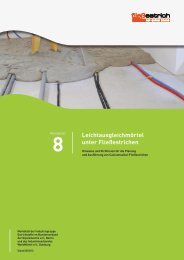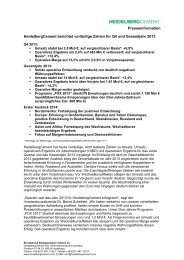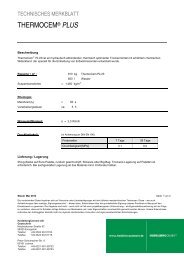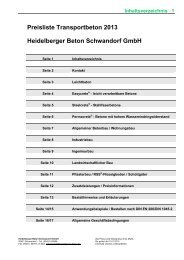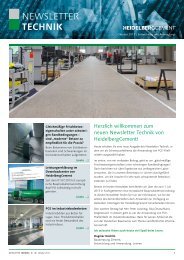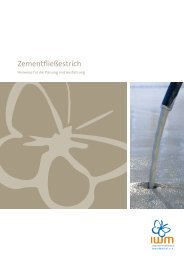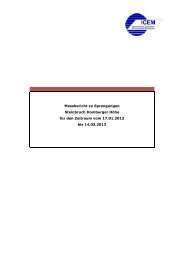TPCC Annual Report 2008.indd - HeidelbergCement
TPCC Annual Report 2008.indd - HeidelbergCement
TPCC Annual Report 2008.indd - HeidelbergCement
Create successful ePaper yourself
Turn your PDF publications into a flip-book with our unique Google optimized e-Paper software.
Tanzania Portland Cement Company Ltd, <strong>Annual</strong> <strong>Report</strong> 2008<br />
active market, fair value is determined using valuation techniques. Such techniques include using recent arm’s length<br />
market transactions; reference to the current market value of another instrument which is substantially the same; dis-<br />
counted cash flow analysis or other valuation models.<br />
Amortised cost: Held-to-maturity investments and loans and receivables are measured at amortised cost. This is com-<br />
puted using the effective interest method less any allowance for impairment. The calculation takes into account any<br />
premium or discount on acquisition and includes transaction costs and fees that are an integral part of the effective<br />
interest rate.<br />
Impairment of financial assets<br />
The Company assesses at each balance sheet date whether a financial asset or group of financial assets is impaired.<br />
Assets carried at amortised cost: If there is objective evidence that an impairment loss on assets carried at amortised<br />
cost has been incurred, the amount of the loss is measured as the difference between the asset’s carrying amount and<br />
the present value of estimated future cash flows (excluding future expected credit losses that have not been incurred)<br />
discounted at the financial asset’s original effective interest rate (i.e. the effective interest rate computed at initial recog-<br />
nition). The carrying amount of the asset is reduced through use of an allowance account. The amount of the loss shall<br />
be recognised in profit or loss. If, in a subsequent period, the amount of the impairment loss decreases and the decrease<br />
can be related objectively to an event occurring after the impairment was recognised, the previously recognised impair-<br />
ment loss is reversed, to the extent that the carrying value of the asset does not exceed its amortised cost at the reversal<br />
date. Any subsequent reversal of an impairment loss is recognized in profit or loss.<br />
In relation to trade receivables, a provision for impairment is made when there is objective evidence (such as the prob-<br />
ability of insolvency or significant financial difficulties of the debtor) that the Company will not be able to collect all of<br />
the amounts due under the original terms of the invoice. The carrying amount of the receivable is reduced through use<br />
of an allowance account. Impaired debts are derecognised when they are assessed as uncollectible.<br />
Available-for-sale financial investments: If an available-for-sale asset is impaired, an amount comprising the difference<br />
between its cost (net of any principal payment and amortisation) and its current fair value, less any impairment loss pre-<br />
viously recognised in profit or loss, is transferred from equity to profit or loss. Reversals in respect of equity instruments<br />
classified as available-for-sale are not recognised in profit or loss. Reversals of impairment losses on debt instruments<br />
are reversed through profit or loss, if the increase in fair value of the instrument can be objectively related to an event<br />
occurring after the impairment loss was recognised in profit or loss.<br />
Derecognition of financial assets and liabilities<br />
Financial assets: A financial asset (or, where applicable a part of a financial asset or part of a group of similar financial<br />
assets) is derecognised where:<br />
• the rights to receive cash flows from the asset have expired;<br />
• the Company retains the right to receive cash flows from the asset, but has assumed an obligation to pay them<br />
38<br />
in full without material delay to a third party under a ‘pass-through’ arrangement; or<br />
• the Company has transferred its rights to receive cash flows from the asset and either (a) has transferred sub-<br />
stantially all the risks and rewards of the asset, or (b) has neither transferred nor retained substantially all the<br />
risks and rewards of the asset, but has transferred control of the asset.





